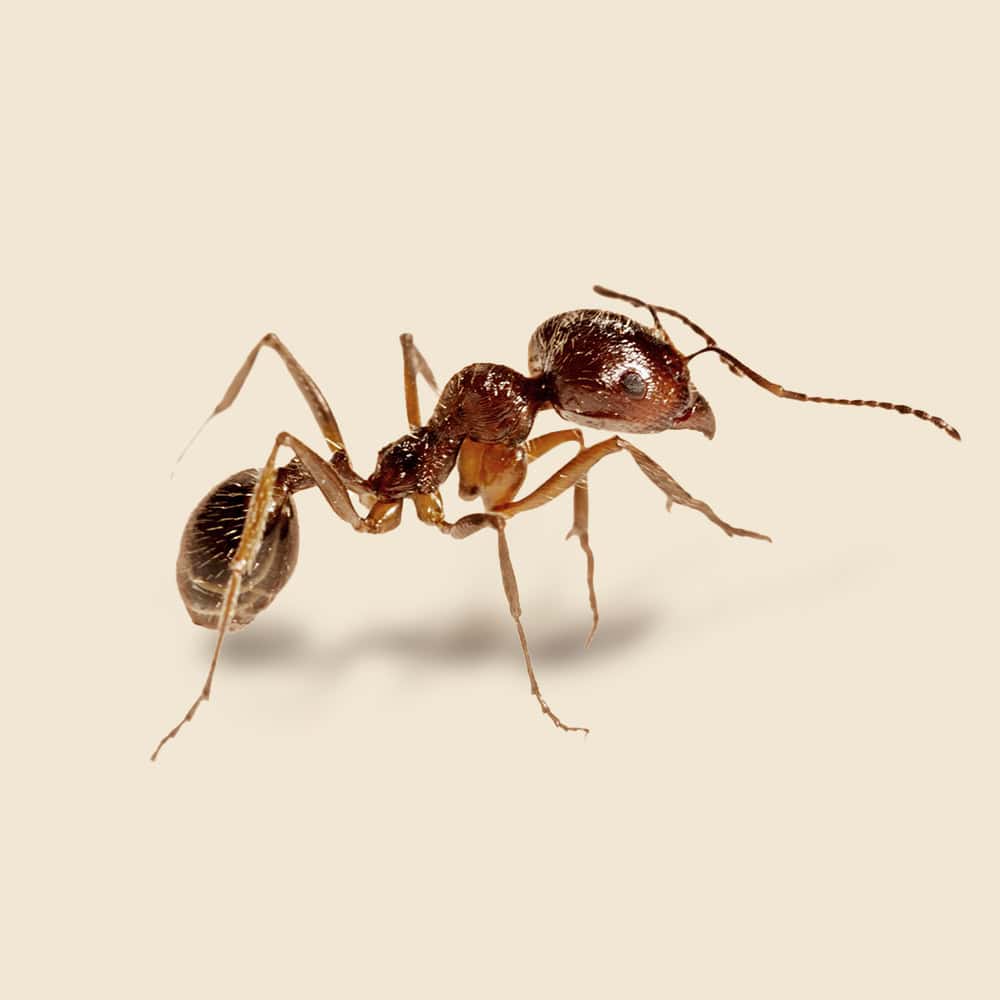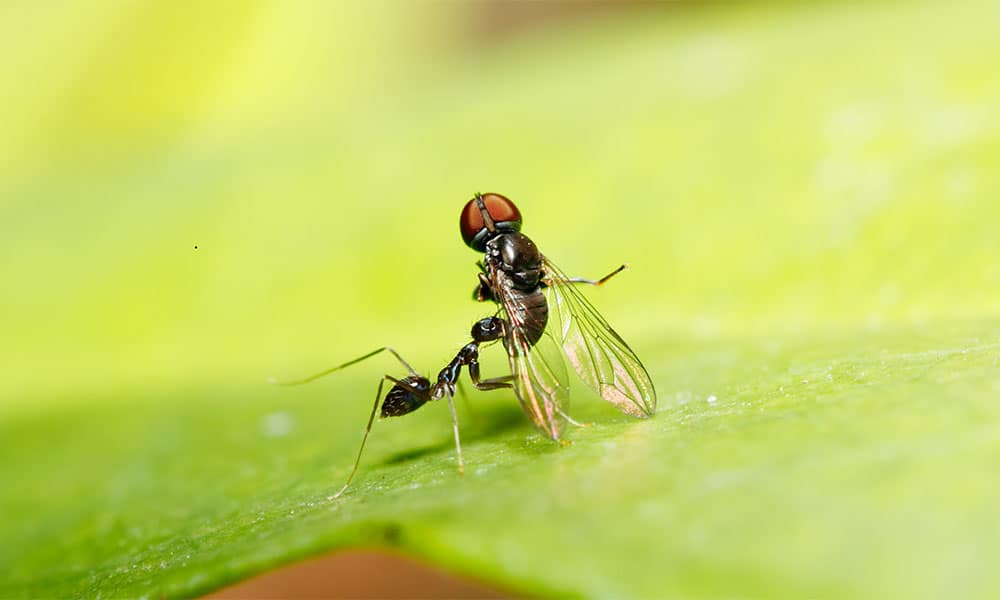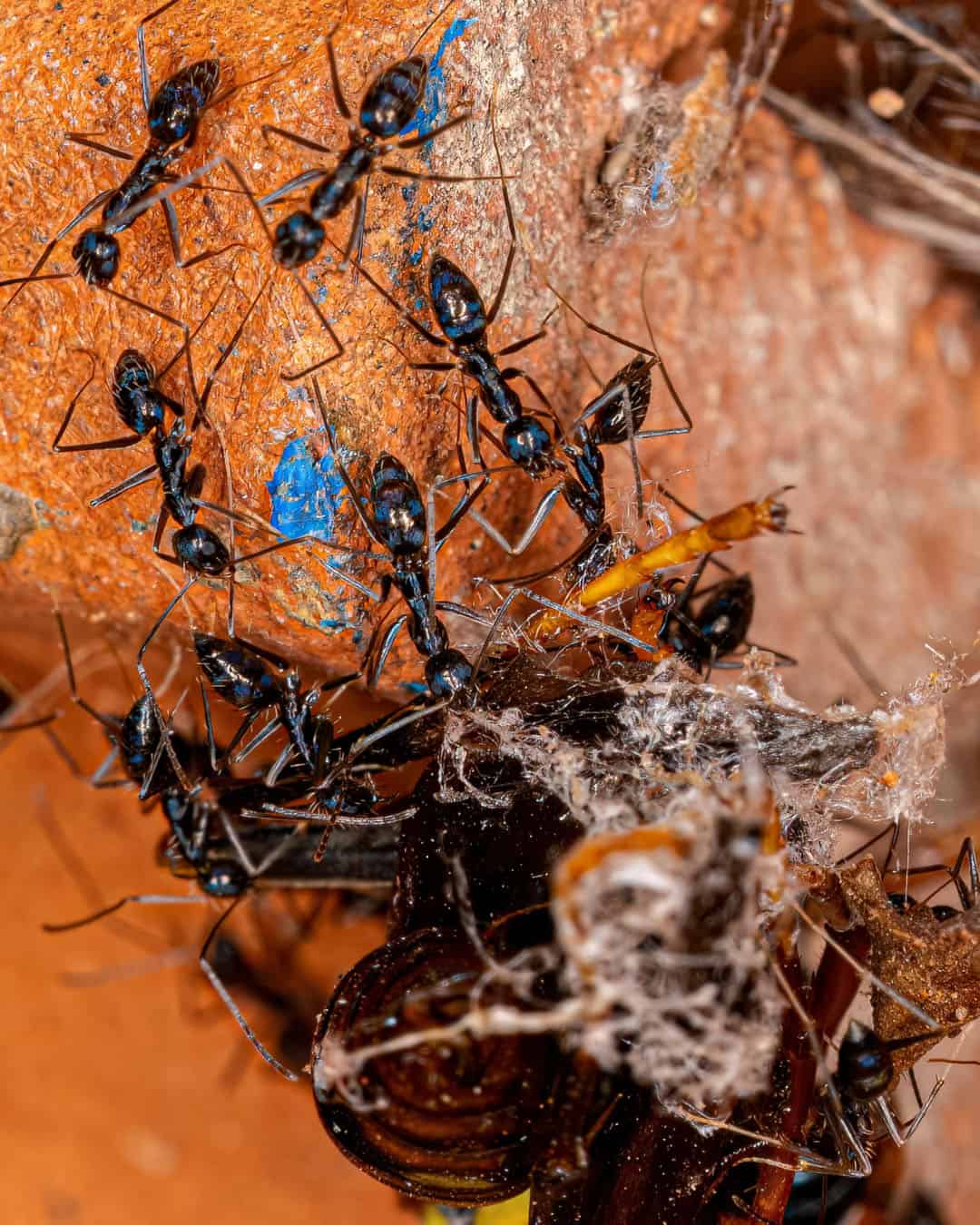Longhorn Crazy Ant Facts & Information
Longhorned crazy ants, known for their distinctive long antennae and erratic movements, can become a significant pest when they invade homes and properties. These ants are recognized by their characteristic appearance and aggressive behavior, which can create considerable discomfort and property damage.

Paratrechina longicornis
What You Need To Know About Longhorn Crazy Ants
What do longhorned crazy ants look like?
Longhorned crazy ants, also known as Paratrechina longicornis, are small to medium-sized ants, typically measuring about 1/8 to 1/4 inch in length. They are light brown to reddish-brown and have notably long, curved antennae with a distinctive, horn-like appearance. Their bodies are relatively smooth and shiny, with a characteristic erratic, “crazy” movement when they are on the move.
What do longhorned crazy ants eat?
Longhorned crazy ants are omnivorous and have a diverse diet. They feed on a variety of substances, including sweets, proteins, and other food scraps. Their diet can include insects, nectar, and even small arthropods.
What sort of habitat do longhorned crazy ants live in?
Longhorned crazy ants are adaptable and can thrive in various environments, including forests, gardens, and urban areas. They typically build their nests in soil, under rocks, or in decaying wood. In human-inhabited areas, they may nest in wall voids, under floorboards, or around building foundations.
How do longhorned crazy ants commonly behave?
Longhorned crazy ants are known for their erratic and rapid movement, which gives them their “crazy” name. They are highly social and live in large colonies with numerous workers. These ants are opportunistic foragers and can form long trails to food sources. They are also known for their aggressive defense of their nests.
Did you know this about longhorned crazy ants?
Longhorned crazy ants are notable for their extremely long antennae, which they use to sense their environment and communicate with other ants. Their erratic behavior and rapid movements are thought to help them evade predators. Despite their small size, these ants can form large, invasive colonies that can become significant pests in both natural and urban settings. Their ability to adapt to a wide range of environments makes them a versatile and persistent species.
Understanding Longhorn Crazy Ant Infestations
Understanding longhorn crazy ant infestations is crucial for effective management. These ants are known for their large, long antennae and unpredictable, erratic movements. They form large colonies and are often found in decaying wood, soil, and around structures. Their nests can be extensive and challenging to locate. Longhorn crazy ants can also invade homes in search of food and moisture, leading to problems in indoor environments.

How Hearts Handles Longhorn Crazy Ant Treatment
Hearts Pest Management employs an integrated pest management approach to handle Long Horn Crazy Ant infestations.
LongHorned Crazy Ant Inspection
LongHorned Crazy Ant Treatment
LongHorned Crazy Ant Prevention
Educational Resources

Think You Might Have a Longhorn Crazy Ant Infestation?
At Hearts Pest Control, we understand the challenges associated with Longhorn Crazy Ant infestations and are here to provide professional solutions tailored to your needs. Flourishing in warm and humid climates, they are prevalent in many regions, including San Diego County, Orange County, and Los Angeles County.